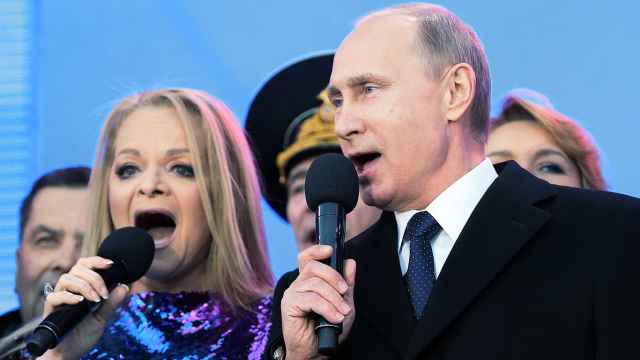The worst of the financial and economic crisis seems to be over. Asset markets performed reasonably well in 2010. Growth in the United States and parts of Europe returned. Private-sector deleveraging continued, but was counterbalanced by rising public-sector deficits and debt. And emerging-market growth returned to pre-crisis levels and appears to be sustainable, helped by unorthodox policies designed to “sterilize” massive capital inflows.
But continued high growth in emerging markets depends on avoiding a second major downturn in the advanced economies, which continue to absorb a large, although declining, share of their exports. Slow growth is manageable. Negative growth is not.
Thus, for the emerging economies, advanced countries downside risks and the spillover effects of their recovery policies are the key areas of concern. In several advanced countries, including the United States, growth and employment prospects are starting to diverge widely, endangering social cohesion and economic openness.
This situation is largely the result of predictable post-crisis economic dynamics, as firms and households in advanced countries repair their balance sheets. But it also reflects noncooperative policy choices. Indeed, attempts to coordinate economic policy across the Group of 20, which accounts for 85 percent of global gross domestic product, fell short of what was hoped for in 2010.
So what would a coordinated set of global economic policies look like?
First, it would include credible plans in Europe and the United States to restore fiscal balance. In Europe, that means agreeing on burden sharing for recapitalizing countries where deficits and debt have cut off market access or led to prohibitively high borrowing costs. Restructuring damages the euro, and fiscal consolidation in the distressed countries, while necessary, is probably not sufficient. That leaves Europe’s stronger countries, particularly Germany, with the residual liability. Greater fiscal centralization and political unification seem inevitable, but it may take time to muddle through to that outcome.
In the United States, the main challenge is to restore fiscal balance without damaging the recovery and future growth. Getting the balance correct is complicated by the fact that the right fears that the left will use fiscal stimulus as a path to permanently larger government, a path that the right — and apparently the general public as well — is unwilling to follow.
The second item on the agenda is a pullback from quantitative easing in the United States, which is subjecting the emerging economies to a flood of capital, rising commodity prices, inflation and asset bubbles. Intervention may be needed in fragile sectors of the U.S. economy, like housing, where faltering performance could produce another downturn. But such intervention can and must be far more precisely targeted than QE2, defined as the second round of quantitative easing. The United States’ reluctance to target areas of weakness or fragility leaves the impression externally that QE2’s real goal is to weaken the dollar.
Beyond that, it is unclear whether or how QE2 will produce much growth. Its proponents argue that it is the main policy instrument left and that it will work by increasing credit or lowering the discount rate, which will raise asset prices and hence consumption via balance-sheet effects. But do we really want to see the United States leveraged up to its ears again? Probably not.
On the balance-sheet side, even if a temporary decline in long-term interest rates pushes up asset values, debt-burdened households with uncertain employment prospects are unlikely to rush to consume. After all, the wealth effect works only when people believe that the wealth is permanent.
Third, advanced and emerging economies that are running chronic surpluses must get rid of them. The policies needed to do so vary by country and involve structural shifts.
In the case of China, a key part of its 12th five-year plan is to shift income to the household sector, where the savings rate is high but still lower than the corporate rate. The economy can then use household savings — provided there is appropriate financial intermediation — to finance corporate and government investment, rather than the U.S. government. That structural shift, in combination with the yuan’s strengthening effective real exchange rate relative to the dollar, owing to inflation and rapidly rising wages in export sectors, offers hope that China’s surplus will fall.
The fourth item concerns the fact that the global economy will be out of balance so long as the United States runs large current-account deficits. With the post-crisis resetting of domestic consumption and savings, U.S. aggregate demand will remain depressed. In the longer run, that gap needs to be filled by higher foreign demand and increased export potential.
The U.S. tradable sector is growing. Its major subsectors — increasingly, high value-added (per person employed) services — are highly competitive and growing. But they are not big enough to fill the gap. Imports could fall, as they did during the crisis, but that was because of declining demand, not to a shift in demand in favor of domestic producers.
The tradable sector accounts for just 30 percent of the U.S. economy (by value added), and employment growth in the tradable sector is negligible. If employment growth in the nontradable sector — dominated by government and health care — falters, the tradable sector will have to take up the slack. The problem is that it can’t, even with a depreciating currency. If exports are to grow substantially, the scope of the tradable sector must expand.
Fifth, major holders of reserves must agree to deploy them in a way aimed at maintaining global financial stability and preventing excessively volatile exchange-rate and capital movements. With periodic bouts of contagion in the euro zone and residual uncertainty about U.S. commitment to a strong dollar and fiscal discipline, major reserve holders in Asia and the Gulf need to become a stabilizing counterweight.
None of these steps are easy. They will take time. But taken together, they would help reduce uncertainty and restore a pattern of stability and inclusive growth to the global economy, thereby bolstering its continued openness. In avoiding second- or third-best outcomes and policy accidents, international economic policy coordination, though difficult, has a vital role to play.
Michael Spence is professor of economics at New York University’s Stern School of Business and senior fellow at Stanford University’s Hoover Institution. © Project Syndicate
A Message from The Moscow Times:
Dear readers,
We are facing unprecedented challenges. Russia's Prosecutor General's Office has designated The Moscow Times as an "undesirable" organization, criminalizing our work and putting our staff at risk of prosecution. This follows our earlier unjust labeling as a "foreign agent."
These actions are direct attempts to silence independent journalism in Russia. The authorities claim our work "discredits the decisions of the Russian leadership." We see things differently: we strive to provide accurate, unbiased reporting on Russia.
We, the journalists of The Moscow Times, refuse to be silenced. But to continue our work, we need your help.
Your support, no matter how small, makes a world of difference. If you can, please support us monthly starting from just $2. It's quick to set up, and every contribution makes a significant impact.
By supporting The Moscow Times, you're defending open, independent journalism in the face of repression. Thank you for standing with us.
Remind me later.





